Rank Species | ||
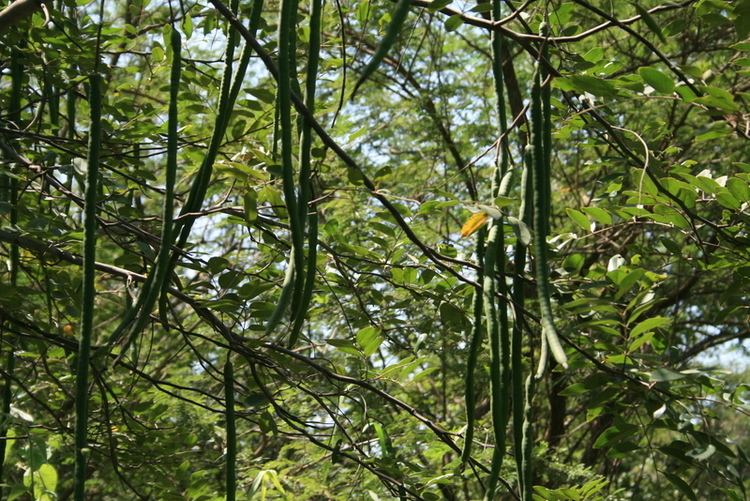 | ||
Similar Acacia sieberiana, Piliostigma, Mitragyna inermis, Combretum glutinosum, Anogeissus leiocarpa | ||
Cassia sieberiana, drumstick tree, is a tree in the Fabaceae family native to Africa. It ranges from 10–20 metres in height and has very bright yellow flowers. It is used for multiple medical purposes in Africa and is found in the secondary jungle of a forest.
Contents
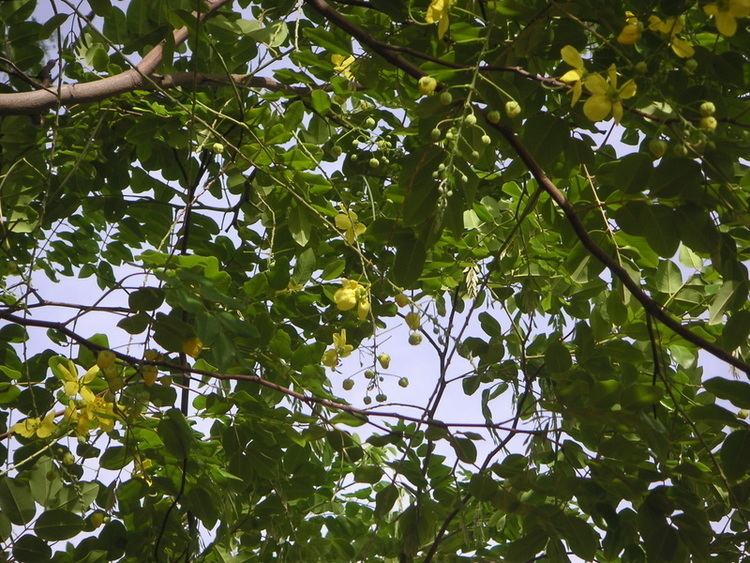
Description
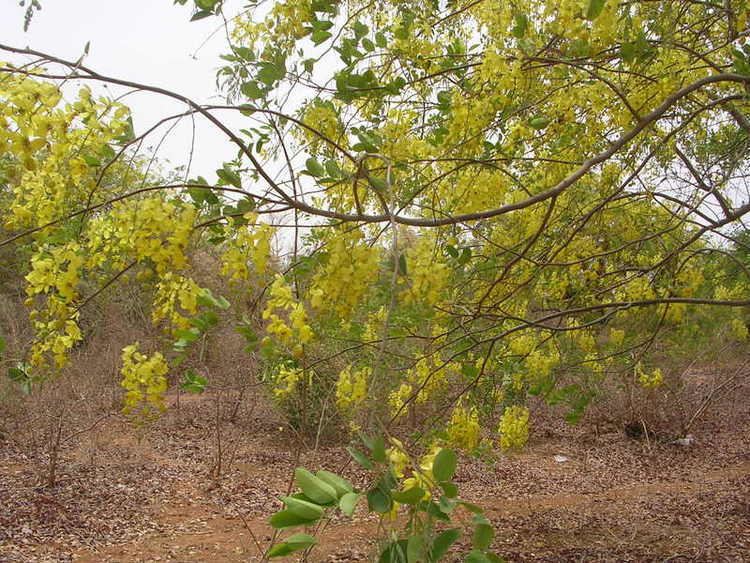
Individuals of this species are anywhere from 10-20m in height. The bark ranges from a dark grey to black. The lenticels are horizontal and a reddish color. The leaves are arranged in leaflets that contain 7-10 pair of opposite leaves. The upper side of the leaf is moderately shiny while the bottom has very fine nerves with stipules that are deciduous.
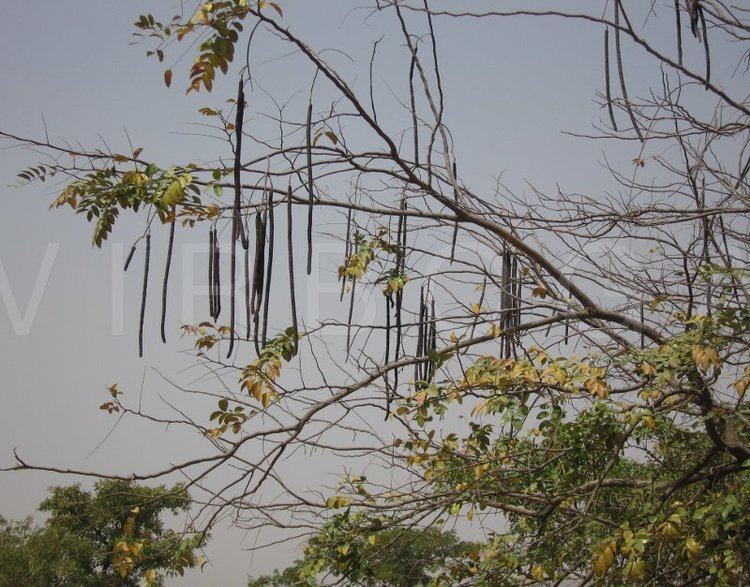
This plant has both flowers and fruit. The flowers are a very bright yellow during the dry season, which is from February through March. Flowers are arranged either upright or in pendulous racemes ranging from 30–50 cm. There are five sepals with 5 bracts. The petals are 15–20 cm long while the green sepals are 6-7mm in length. There are a total of 10 stamens. The fruit ranges from a dark brown to black color. The fruit is indehiscent in that it stays attached to the tree for an extended amount of time. September through February is when the fruit reaches maturity.
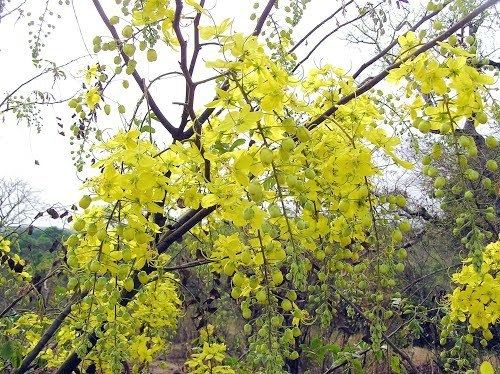
The tree is named sindia in the Wolof language, and sinjan in Bambara language, which literally means "long breast," a reference to the shape of the seed pods.
Distribution and habitat
Cassia sieberiana is found in multiple parts of Africa including the southern part of the Sahel,
Senegal, Sudan, and Uganda. It is also found in East Africa.
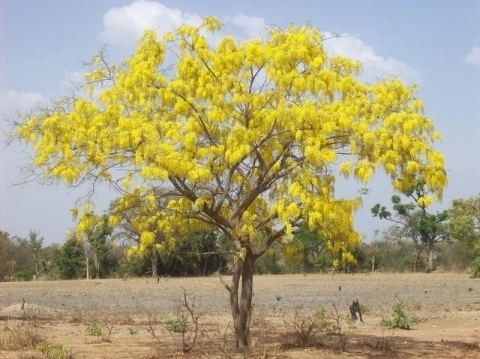
Cassia sieberiana grows best in well drained, humid soils with an annual rainfall of approximately 20 inches. It typically grows as a shrub in very dry regions. These shrubs grow in groups of other plants, they usually never grow alone.
Food
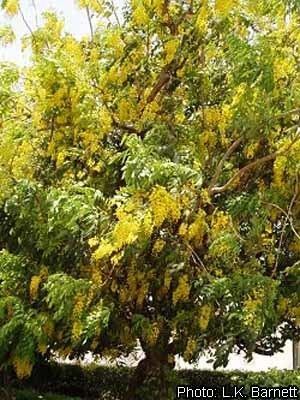
In Nigeria the sweet extract of the stems is used for food. Chew sticks can also be made from the root-wood part of the plant.
Medicinal
Cassia sieberiana has many medicinal usages. The roots are used as a diuretic and vermifuge that are used to treat diseases such as elephantiasis, leprosy, diarrhea, hemorrhoids, dysentery, and venereal diseases. It can also be used to help symptoms related to the menstrual cycle and as a pain killer. Other uses include treatment for the ears with the root and seed. Seeds are also used as sedatives. The root-bark also is additionally used for dropsy, swelling, and gout. Lastly, the leaves help with the symptoms of arthritis and rheumatism. Parts of the plant have also been used as teeth cleaning twigs. The reason cassia sieberiana has so many medicinal uses is the hydrogen cyanide that is found throughout the tree, the tannins and astringents in the trunk-bark and root, and glycosides, saponins, and steroids in the trunk-bark, root, and seeds. Cassia sieberiana was found to have antimicrobial activity against Herpes simplex virus type 1, Neisseria gonorrhea, and African swine fever virus. In the same study, it was shown that the roots contain flavonoids, anthracenic derivatives, and tannins. In another study, this plant was shown to considerably inhibit HIV-1c replication because of the tannin that is found in the roots and bark.
Other uses
Cassia sieberiana is used to make tools, pestles, mortars, and also used for construction because it is a very hard wood that is resistant to termites. In addition, it is also an ornamental tree because of its brightly colored flowers. Some cultures also incorporate the plant in their religion and for superstitious and magical purposes.
